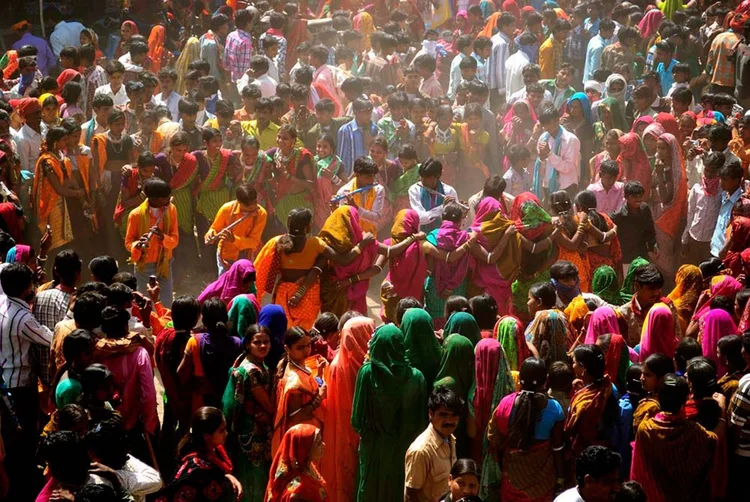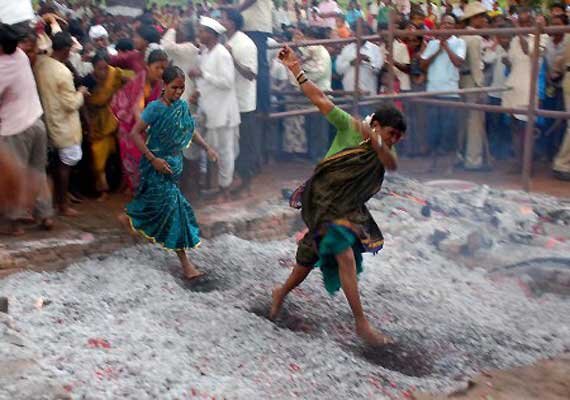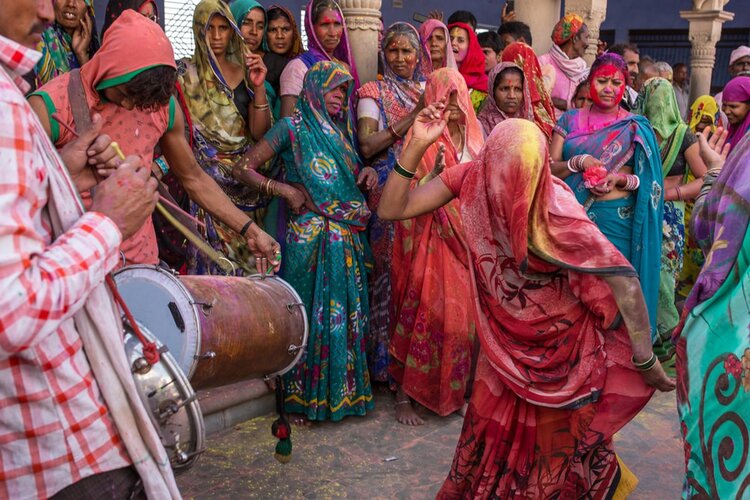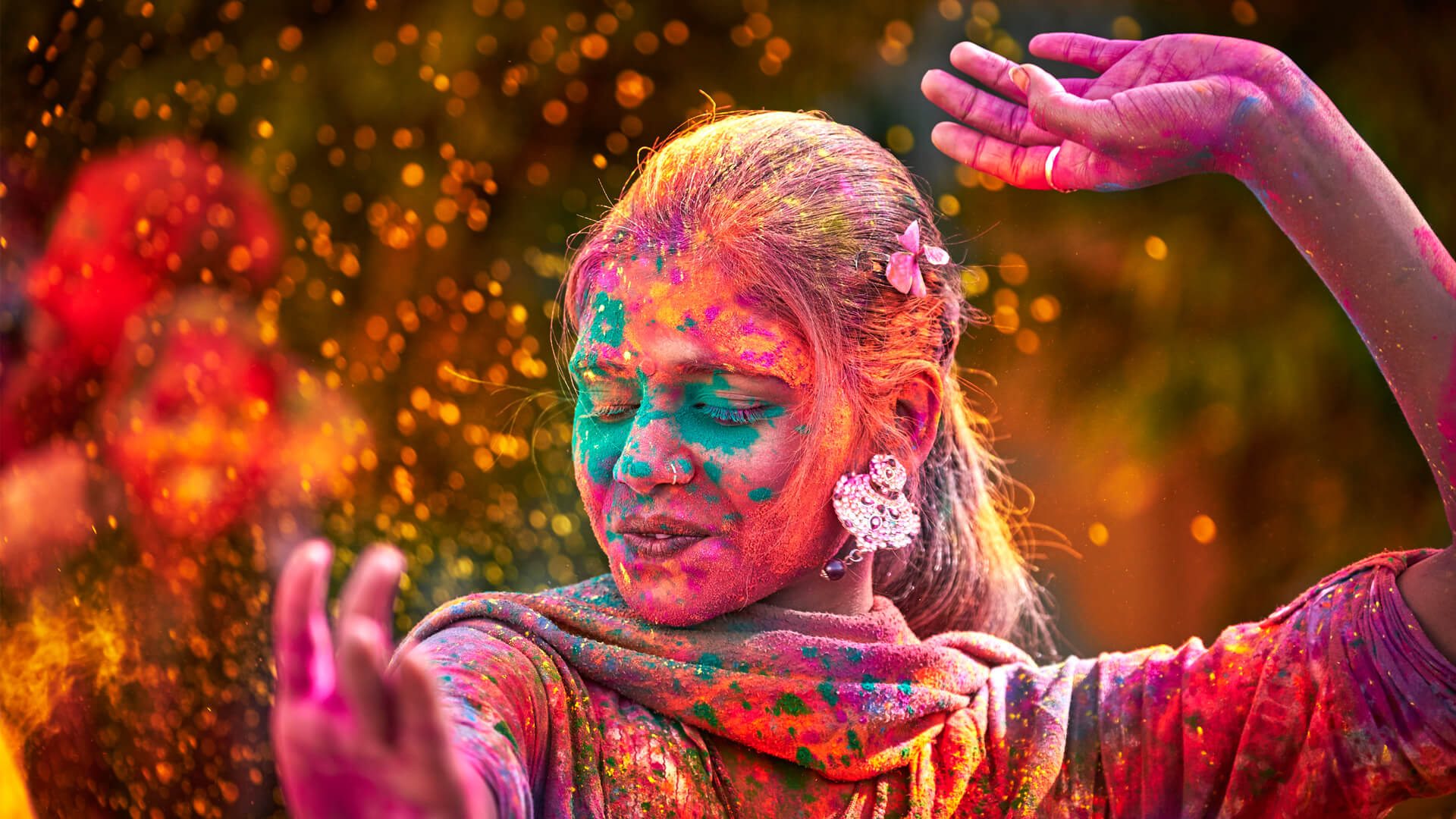Holi : Let the Subaltern Speak
Critical theory can be an important tool to understand society. By peeling the many layers that constitute it, we discover new insights and develop new understandings of the subject matter. However, it is important to understand that it is but a lens and an imperfect one at that. The analyses it yields are not final and absolute, there can be disagreements and critiques of these analyses, counter-theories and offshoots can emerge too.
Whenever theories emerge from Western academia that speaks for the subaltern of the Global South, we must exercise a great deal of caution for, more times than not, these analyses are riddled with “sanctioned ignorance”.
“Spivak asserts that this baggage of sanctioned ignorances, as well as one’s institutional positionings, always mediate the representations and engagements with the Third World subaltern. In her critique, she shows that attempts to speak for the subaltern, to enable the subaltern to speak or even to listen to the subaltern can very easily end up silencing the subaltern.” (Andreotti, 2007, p. 71)
Khader explores this further in the context of feminism in her seminal work, “Decolonizing Universalism: A transnational feminist ethics” where she highlights an essential point:
“Enlightenment liberalism’s teleological narrative about the West as the apex of human progress supplies an explanation of why feminism is meant to require the adoption of Western cultural forms; according to the Enlightenment liberal retelling of history, moral progress means the erosion of community and tradition that the West has ostensibly already achieved. Western willingness to erode communal bonds (rather than, say, Western willingness to engage in imperialism) explains the ostensible economic, military, and ostensibly moral superiority. The Enlightenment liberal association of Western values with moral progress also helps explain why Western feminists easily lose sight of feminism’s true normative core: opposition to sexist oppression. Oppression is a set of social conditions that systematically disadvantages members of one social group relative to another (see Frye 1983; Young 1990). Yet it is all too often uncritically assumed that feminism is just improving women’s well-being within an oppressive system, or that feminist change will occur if women have the ability to reject the trappings of their religions or cultures or to earn incomes.” (Khader, 2018)
Thus, whenever theories emerge from the Western academy that claim to speak for the subaltern of the Global South, they (and their students) must show that their liberation theories have passed the two tests:
- that they are not negating the subaltern experience by silencing them, speaking over them or speaking for them and
- that they are not assuming a universalizing (eg. colonizing) type of lens that supposes a predetermined model of moral progress that demands subaltern to let go of their religious and cultural ties in order to achieve liberation through adopting Western culture.
Holi, In Context
In a previous article of this series, we did a deep dive into the various rural and tribal traditions of Holi.

We explored how Holi is primarily a rural, tribal and agrarian celebration which is very widely celebrated across the tribes of North, North-western and even North-eastern India. Each of these tribes have their own unique traditions around the festival but most, if not all, also celebrate the Holi bonfire, also known as “Holika Dahan”. This bonfire ritual, in fact, bears several similarities with similar harvest-related bonfire rituals across indigenous tribes around the world. We also discussed how most of these tribes, often consider the Divine Mother, Shakti, as their primary deity and therefore, they also have some Goddess related legends associated with Holi. These Goddess-inspired elements of tribal celebrations are perhaps one of the least understood oft-overlooked themes in colonial and post-colonial studies of India.
Having discussed the subaltern celebrations of Holi in detail, we will turn our gaze towards some of the most common criticisms raised in context of Holi, with a commitment to decoloniality (and not simply “anti-oppressiveness”, which is a classic colonizing weapon and, thus, should be thoroughly investigated and not simply taken to have integrity).
Is Holi a Casteist Festival because Holika was a Dalit Woman?
The (recent) claim that Holi is a casteist festival hinges upon the argument that Holika, the demoness who died while trying to kill her nephew, was a Dalit woman. It follows, therefore, that the celebration of Holi is casteist because it normalizes, through ritual, the burning of a Dalit woman.
This argument first became mainstream in this blog by Pradnya Waghule, “Reading Caste In Holi: The Burning Of Holika, A Bahujan Woman” followed by a recent but equally troubling article “Why do we say no to Holi – A Guide to Challenge Casteism” by Equality Labs. A full critique of these blog posts and feminisminindia.com and Equality Lab’s history of Hindumisia (hatred of Hinduism), is beyond the scope of this article but I would like to point out a couple of important issues with these claims.
In her article, Waghule describes herself as a middle-class woman who lived in a city all her life. While we’re not questioning the validity of her life-experience, it is important to note that in modern India, there are vast chasms between urban and rural life. This is due to several factors, including rapid urbanization, ossification of social boundaries and other assorted issues that are quite well-documented effects of consumerist, urban culture clashing with indigenous, eco-centric ways of life.
Thus, extending Waghule’s own middle-class, urban experience of Holi, harrowing as it sounds, to nearly one billion Hindus on the planet, particularly given Holi’s vibrant, rich, and inclusive rural and tribal significance, not only lacks logical integrity, but is also ethically troubling.
Similarly, the Equality Labs article makes the ignorant claim that somehow it is the “upper-caste” Americans who celebrate Holi and spend time whitewashing legends about Holi. Unlike Waghule, we have no insight on the background of the author of the Equality Labs piece, but judging by the inaccurate assumptions made in that article, it is not clear whether the author(s) have any real understanding of rural and tribal Hindu traditions.
Given the moral imperative of the academy to ensure its ethical and authentic engagement with the subaltern, it is deeply troubling that these scholars are not only appropriating the spaces and speaking over the voices of subaltern (tribal and rural) Hindus, but are encouraging younger generations to create a movement around this in the name of liberation.
Second, it’s important to note that Waghule’s claim that Holika was a Bahujan woman is unsubstantiated, save for one article on mulniwasi.bamcef.org which, it appears, is no longer to be found on the site. The Equality Labs article uses two citation-free articles by K. Jamnadas and Kanwal Bharti, which also provide no references as to why Holika is considered a Dalit woman, except for citing two, decades-old, reformist sources who consider all Puranas to be a Brahminical conspiracy. Deconstructing this circular argument is outside the scope of this article.
Kanwal Bharti’s arguments to prove Holika is a Dalit woman are rooted in the claim that all “Asuras” were supposedly the Dasyus from the thoroughly debunked Aryan Invasion Theory. Once again, we shall not delve into the details of AIT, but interested readers may peruse these very detailed analyses by scientists that discuss the genetic evidence as well as this detailed talk by Dr. Raj Vedam. We have added additional resources in the “Suggested Readings” section below for those who are interested in learning more.
Note how none of these claims take into consideration the popularity of Holi among the subaltern nor do they acknowledge the wide diversity of tribal traditions. Associations of “Brahminism” with respect to Holi are especially problematic for several reasons, most of important of which is that the typical elements that are often identified as “Brahminism”, Sanskrit, homam, Vedic verses, etc. are virtually non-existent in Holi celebrations. The bonfire ritual, with its myriad legends of which the Prahlada legend is but one, is more reminiscent of indigenous tribal bonfire rituals around the world, than a typical Yajna or Homam.
Moreover, there is a valid, critical, and decolonial argument to be made that “brahmanism” was a weapon designed by colonial Indologists. Yet, this continues to be perpetuated in post-colonial studies as well. One may refer to the seminal work of Dr. Vishwa Adluri and Dr. Joydeep Bagchi exposing the racist and colonial bias in Indology [1] [2] [3].
Now, let us examine the assertion of whether Holika, was indeed a Dalit woman.

Imposing caste, a social construct, onto Hindu scriptures is complicated, for a variety of reasons. For one, there is a very important distinction between varna and jati that is often overlooked. However, for argument’s sake, let’s pull on this thread, anyway. To ensure that we are being thorough in unpacking this claim, let’s go back to the Bhagavata Purana. This text – the sole source of the legend of Prahlada, including Holika – also describes Hiranyakashyipu’s origins in great detail. He is described as the son of Sage Kashyapa (hence the “Kashyipu ” in his name) and his second wife, Diti, who is the daughter of King Daksha. (Srimad Bhagavatam, 3.17 v 18).
Sage Kashyapa is the son of Marichi and the grandson of Lord Brahma and is also one of the seven sages (Saptarishis) from whom most Hindus, especially Brahmin lineages, trace their origins. Now since caste, by definition, is patrilineal, this makes King Hiranyakashipu a Brahmin. By extension, Holika, Hiranyakashyipu’s sister, is also a Brahmin.
Another quick note to be made here, is that the Daityas, including Hiranyakashyipu and Holika, also get boons from the same Gods through extreme penance. This highlights that even the villains in Hindu Puranic stories do not fall under a monolithic class of “evil” “satanic” “demons”, but are highly accomplished achievers, who simply fall prey to the material greed instead of rising above their base instincts. Those coming from the very same lineage, like Prahlada, make the right choices and stand up to tyranny and persecution and are justly rewarded. If anything, this story counters the theory that birth-based caste has moral assignations.
However, it is important to note here that there are repeated references to Hiranyakashipu in Srimad Bhagavatam are as a Daitya King (not Asura, as claimed by Bharti), is often mistranslated as demon in English, even though in Sanskrit, it simply means son of Diti (as opposed to Adityas, the son of Aditi, Kashyapa’s other wife).
There is also a possibility that this confusion that Holika was a Bahujan woman emerges from the other very common mistake made by outside scholars who confuse all references to “Holi Mata” to that of demoness Holika, perhaps due to their limited understanding of the Shakta tradition and native languages. This is summarily untrue, as we noted in the example of Laman Banjara in the previous article, where Goddess Hingala is often colloquially referred to as Holi Mata. This reference is not for the Daitya woman, Holika.
Remember, for the majority of Indian tribes, the primary deity is Shakti (the Divine Mother), and therefore some form of Goddess worship is associated with all major festivals, even the ones where the mainstream Hindu celebration is of male divinity, such as the Dussehra celebration in Dantewada, Chhattisgarh (see here). So, it is not unusual to see a “Holi Mata”, associated with Holi, even though the mainstream celebration is of the Narasimha avatar of Lord Vishnu and Prahlada. However, it would be erroneous to ignore the tribal Goddess-centric legends that lead to this connection of a Holi Mata, and assume that the reference is only for Holika from the Pauranic story.
Note: Across North India, deities are ascribed colloquial names based on the festival with which they are associated. Thus, you may find references to Chhatthi Mata for the Goddess worshipped during the Chhath festival, which is primarily a Sun worship festival, or Teej Mata, for the Goddess worshipped during Teej. These colloquial names address the particular deity associated with the legend of the festival, ascribed for the ease-of-use to establish a clear connection with the festival. In fact, the names often are meani, Teej means third-day and Chhath means sixth-day, so unless seen in association with the festival, the names Chhatthi Mata, would not make much sense.
Is Holi a Toxically Masculine Festival?
The second recent criticism that has been used against Holi, which I would like to address here is the insinuation that Holi is a celebration for uncouth, rowdy, violent men who allegedly roam the streets attacking women as discussed by Waghule. Of course, incidents like these are, indeed, being reported from various urban centers, especially metropolitan areas. However, we would like to highlight, again, that experiences of urban India are distinct from experiences in rural India and tribal areas. We offer that these incidences are a reflection of rapid urbanization, and not of the holiday-tradition itself.

What is even more disturbing, however, is not simply that urban experiences are overwriting rural and tribal ones, but that colonial tropes continue to be regurgitated onto indigenous tribal festivals. These colonial tropes are reimagined as allegedly legitimate “feminist” critiques, without a trace of self-awareness that they are simply a Western gaze in a new package. (I question the use of the term feminist here, as this version of feminism insists on correcting indigenous traditions themselves with Western “civilizing” culture.)
That colonial “scholars” of Indian traditions, driven by their Victorian morays and their Christian morality, often looked down upon the indigenous practices and wished to “civilize the natives” is hardly a secret. However, it must be noted how they often used the subtle language hints to induce shame the natives in an attempt to civilize them.
Note the following excerpts taken from colonial observers of Indian festival of Holi that were published between 1914-1970:
“On the day of Holi or Phagua, bands of women roamed the countryside until noon, showering men with a red fluid meant to represent blood. . . . being their only period of license during the long year, the women made the most of it. By midday, unpopular overseers looked like what happened on St. Bartholomew’s day; the popular were drenched in cheap perfume. From the glimmer of dawn, Lautoka and the estates were overrun by gaggles of excited women and girls out for a good time. With male control absent for the time being, things happened which staggered the godly.” (Kelly, 1988)
“With the usual outburst of obscenity and sexual licence the proceedings of the first day of the Holi feast conclude.On the second day follow the customs of flinging dust and other dirt, with coloured water, on the spectators.” (Crooke, 1914)
“On the third day the men sing songs, and fling earth and cow dung at the women, and throw about coloured powder. The feast ends in general debauchery” (Kelly, 1988)
Pay close attention to the terms “obscenity”, “sexual license”, “cheap perfume”, “male control absent” and finally “things happened with staggered the godly”. These terms are clearly, carefully chosen to suggest that the women and men that participated in Holi celebrations were of loose moral character and had sexual intentions. The “gaggles of women and girls”, “cheap perfume” reference is also skillfully chosen to create an image of a prostitute in the mind of a reader, which was a common colonial technique to lower the opinion of the women who participated in folk festivals as of low moral character, so that the native women would eventually stop participating for fear of being seen as morally suspect.
This characterization of the “Hindoo” as a savage was so blatant and evidence-free, that even an American scholar objected to such characterization, as published in Letters to the Editor of American Anthropologist Journal.
“On page 72 of his book without the benefit of quotation marks, he calls Holi “the annual saturnalia.” In his glossary he defines Holi as “the Hindu saturnalia.” The Oxford Universal Dictionary defines saturnalia as “a period of unrestrained licence and revelry,” and this is certainly the general meaning the word conveys. It is true that certain conventions that are adhered to during the rest of the year are relaxed during the Holi period. It is definitely not true that license prevails”
This imposition of Victorian morality often worked quite well, especially as natives sought approval in the hands of their “civilized masters”, as they sought government jobs in order to move up the socio-economic ladder. In fact, the social-climbing natives, would actually then do the job of the colonizer, and shame other natives in order to prove themselves as being worthy and “civilized”.
The brunt of this civilizing mission was borne by the Goddess worshipping tribals for two reasons.

First, most Goddess-worshipping tribals fiercely resisted colonial rule as we have discussed previously in our writings.
“Shaktism practitioners were the worst-hit victims of such intellectual efforts to restructure the Hindu psyche into a monocultural-monotheistic caricature of itself. British colonialism, through its legal frameworks as well as its intelligentsia, targeted the indigenous forest tribes who resisted the colonial advances and religious conversion efforts in the 18th and 19th centuries. Most of these warriors who fought for their self-respect were adherents of their clan’s Goddess (Kula-Devi). By branding over 200 communities as tribes with ‘criminal tendencies’ under the former Criminal Tribes Act (1871), the British aimed to “control and reclaim” communities “addicted to the systematic commission of non-bailable offences”. This inhuman and bigoted criminalization of tribes was supported by depiction in their arts and literature. The depiction of superstitious, savage criminal tribes who often indulged in human sacrifices for the Goddess has been a common feature of many literary works of the 19th and 20th centuries. It is also possible that such stereotypes by the orientalists inspired Steven Spielberg to make the 1984 film Indiana Jones and the Temple of Doom.” (George, 2019)
Second, these Goddess worshipping tribes often had an equal if not higher status for women in the society, unsurprisingly, and women actively participated in the social rituals which was not only contradictory to the colonial morality of the time but openly challenged them. Consider the shock of the colonialist Englishman who saw the burning-ember-walking Gujarati tribals women from Dahod and Narmada districts depicted below..

Women in Victorian society were considered sinful and had a significantly lower status in comparison to the men. Seeing the behaviour of a tribal woman enjoying her freedom in simple things such as the freedom to choose their husbands, or the ritual importance of participating in festivals was considered not only scandalous but the colonists worried that this could have a bad influence on “their civilized women”. In order to counter this potential influence, sordid and entirely concocted anecdotal tales of the “savagery” of the native started getting told. One of the common elements in those tales, aside from the “loose woman” was always the “violent, rowdy man” who attacked any woman he saw. These tales served a dual purpose: they not only made the native feel inferior, they also created fear and suspicion in the minds of the white women who were descending upon the Raj. This, in turn, prevented them from consorting with native men. Meanwhile, white men felt free to take native wives (and convert them). Needless to say, hardly any of these stories about the “savage man” were true, but the visuals of men and women celebrating a festival with reckless abandon, deviated from Victorian morality enough, to reinforce these images of “depravity” where “swathes of rowdy men out to attack women”.
Sadly, it is the same colonial stereotype that we are now seeing re-emerge not only from Hinduphobic circles but also being regurgitated from western feminist scholars, who silence the life experiences of millions of indigenous Hindu women.
Instead, they center and amplify a handful of reports from urban centers to paint an exaggerated negative image of a tribal celebration of Holi. The irony is that that tribal celebration is perhaps closer to feminist aspirations.

If anything, due to the structurally-designed participation of women through inclusion of folk songs, dance, and story-telling in agrarian and nomadic communities in Holi celebrations, scholars studying North Indian folk music have repeatedly noted that Holi is often associated with a
“ritual occasion to release corrosive emotions and reverse normative caste and gender hegemonies. But the significance of Holi lay in the imaginative possibilities it affords women with respect to the improvisation of the oral traditions.” (DeNapoli, 2013)
Post-colonial observers of the Hindu community in as far as Fiji, observe similar reversal of gender and caste hegemonies.
“Gill observed riotous rituals, an absence of control, attacks especially by women on men, even overseers, in reversal of some literally brutal colonial plantation power relations” (Kelly, 1988)
It is our hope that as we continue to learn more context of these Holi celebrations, their subaltern and agrarian origins , the critics would develop a better understanding of Hindu traditions and would stop furthering colonial stereotypes against the very subaltern Hindu communities of India they seek to represent.
We pray that when this Holi, the demon of ignorance is finally vanquished by the light of knowledge spread by the sacred fire of Holika Dahan.
References:
[1] Crooke, W. “The Holi: A Vernal Festival of the Hindus.” Folklore, vol. 25, no. 1, 1914, pp. 55–83. JSTOR, www.jstor.org/stable/1255349
[2] Sri Krishna Dvaipayana Vyasadeva. “Srimad Bhagavatam (Bhagavata Purana).” Apple Books. http://www.srimadbhagavatam.org/index.html
[3] Kelly, John D. “From Holi to Diwali in Fiji: An Essay on Ritual and History.” Man, vol. 23, no. 1, 1988, pp. 40–55. JSTOR, www.jstor.org/stable/2803032
[4] DeNapoli, Antoinette. “Folksongs of North India: A Review Article.” Anthropos, vol. 108, no. 2, 2013, pp. 604–608. JSTOR, www.jstor.org/stable/23509864
[5] Gill, Walter I970. Turn north-east at the tombstone. Adelaide: Rig
[6] Opler, Morris E. “The Hijara (Hermaphrodites) of India and Indian National Character: A Rejoinder.” American Anthropologist, vol. 62, no. 3, 1960, pp. 505–511. JSTOR, www.jstor.org/stable/667311
[7] George, Anjali, “Ma Shakti, The Divine Feminine vs Colonial Demon: An ongoing war…”. Shaktitva Blog, 2019 https://shaktitva.org/blog/navratri2019/ma-shakti-the-divine-feminine-vs-colonial-demon-an-ongoing-war
[8] Khader, Serene J. “Decolonizing Universalism: A Transnational Feminist Ethic: Studies in Feminist Philosophy”, Oxford University Press, 2018
[9] Andreotti V. “An Ethical Engagement with the Other: Spivak’s ideas on Education”, University of Canterbury / CSSGJ, Critical Literacy: Theories and Practices Vol 1:1, Pp 70, 2006
Suggested Readings:
- Crary A., “Against Occidentalism: A Conversation with Alice Crary and Vishwa Adluri on “The Nay Science”, SocialResearchMatters.org, 2017 http://socialresearchmatters.org/against-occidentalism-a-conversation-with-alice-crary-and-vishwa-adluri-on-the-nay-science-2/
- Adluri V., Bagchee J., “The Nay Science”, Oxford University Press, 2014 https://www.amazon.com/Nay-Science-History-German-Indology/dp/0199931364
- Bagchee J., Adluri V. “Philology and Criticism: A Guide to Mahbhrata Textual Criticism (Cultural, Historical and Textual Studies of South Asian Religions Book 1184)”, Anthem Press, 2018 https://www.amazon.com/Philology-Criticism-Mahabharata-Historical-Religions-dp-1783085762/dp/1783085762/ref=mt_hardcover?_encoding=UTF8&me=&qid=1583466308
- Vedam, Raj. “Indian Civilisation: The Untold Story – Revisited”, Srijan Talks, Dec 2018: https://www.youtube.com/watch?v=1bsyi4zYHP0
- Vedam Raj. “Ancient India – What our history texts do not teach us”, Saranga, Dec 2019: https://www.youtube.com/watch?v=b3nI6spmDwE
This article was first published on Shaktitva and has been republished here with permission.
Featured Image: andbeyond.com
Disclaimer: The opinions expressed in this article are the personal opinions of the author. IndiaFacts does not assume any responsibility or liability for the accuracy, completeness, suitability, or validity of any information in this article.

